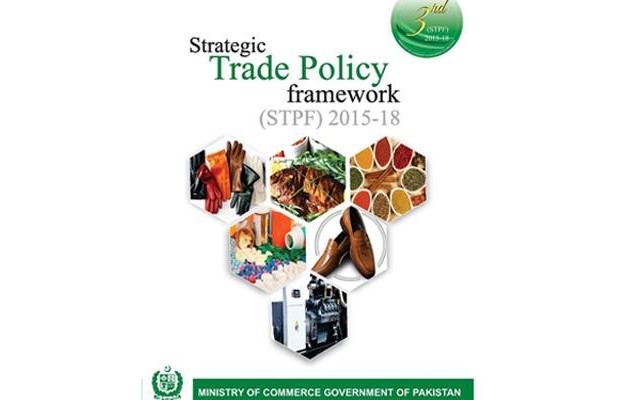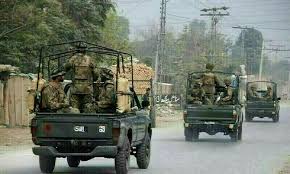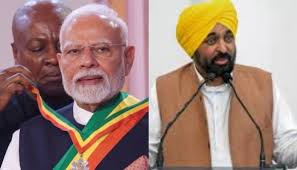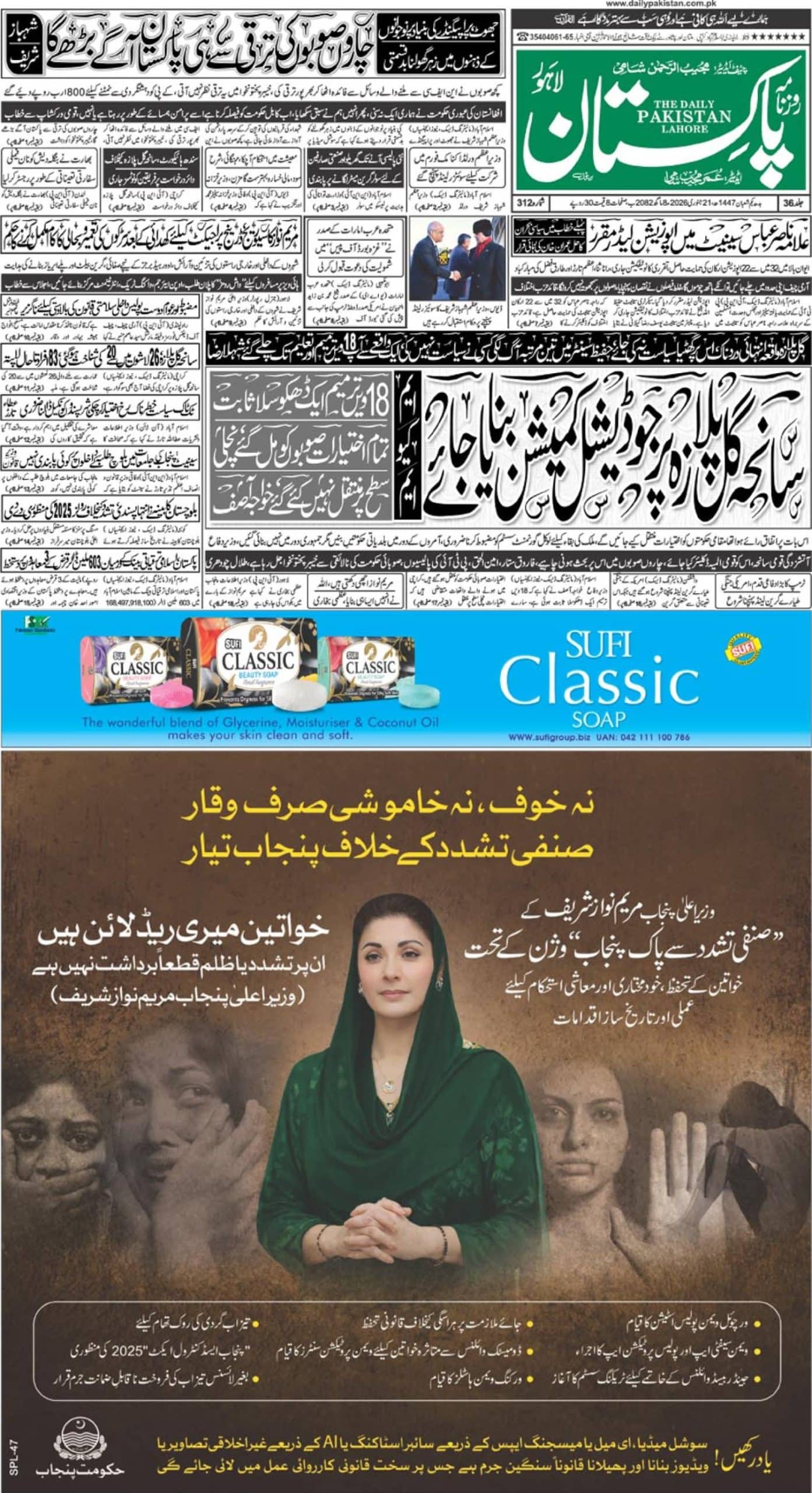With less than eight months left out of its three years period, the Strategic Trade Policy Framework 2015-18 is clearly falling drastically short of its main targets, highlighting the need for out-of-the-box thinking and solutions for this critical area of national development.
Pakistan, until the end of the last decade, has been issuing annual trade policies – usually a month or so after the announcement of the federal budget. However, critics have been pointing out that trade policy should not come as an instrument parallel to the budgetary measures, and must not be short-term, i.e. annual. In 2009, the relevant authorities of the country came up with a medium-term Strategic Trade Policy Framework (STPF) for the three years period – 2009-12. This was followed by STPF of 2012-15. Presently, the third STPF for the period 2015-18 is underway, which has completed two years and is well into its third and last year (to be completed on June 30, 2018.)
It was announced by the government while bringing forth the Strategic Trade Policy Framework 2015-18 that the policy is a result of around one year of consultations between the stakeholders – the government institutions, the private sector and the civil society as well as opinion makers – and it aims to achieve the following targets by June 30, 2018:
- Enhancement of annual exports to US$35 Billion
- Improve Export Competitiveness
- Transition from “factor-driven” economy to “efficiency-driven” and “innovation-driven” economy
- Increase share in regional trade
To achieve the above targets, STPF 2015-18 identified the following key enablers:
- Competitiveness (quality infrastructure, labor productivity, access to utilities, and level of technological development)
- Compliance with standards (convergence of local & international standards, protection of intellectual property, and effective and efficient disputes resolution mechanism)
- Policy environment (monetary policy, tariff & tax regime, and synergic industrial & investment policies)
- Market access (multilateral, regional, and bilateral)
STPF 2015-18 had identified four main pillars on the basis of (i) key enablers, (ii) evaluation of STPF 2012-15, (iii) emerging [in the 2015] global trade scenario and (iv) extensive consultation with the private sector and other stakeholders. These pillars are as follows:
- Product sophistication and diversification (research and development, value addition, and branding)
- Market access (enhancing share in existing markets, exploring new markets, trade diplomacy and regionalism)
- Institutional development and strengthening (restructuring, capacity building, and new institutions)
- Trade facilitation (reducing cost of doing business, standardization, and regulatory measures)
STPF 2015-18 also highlighted the need for focusing on entering more FTAs with friendly nations and important trading partners, with the primary objective of securing better market access for Pakistan – both in already established as well as in new markets. China, Afghanistan, Iran, Malaysia, Thailand, Indonesia, Jordan, and Nigeria were marked as the target countries for enhancing Pakistani exports – in addition to already established export markets of the US and EU, where the bulk of Pakistani exports have traditionally been absorbed. The EU has also provided Pakistan with Generalized Scheme of Preferences (GSP) Plus, through its continuity is subject to certain conditions.
It was clear at the time of the announcement that from traditional westward focus, STPF 2015-18 is suggesting an eastward focus in terms of export destinations and was targeting export diversification – instead of relying heavily on textiles alone.
STPF 2015-18 had set the ambitious goal of exports to reach $35 billion by 2018, because just a year before it was announced, Pakistani exports touched the $25 billion mark for the first time at the end of the fiscal year 2013-14. However, this target is now certain to be missed by a wide margin considering the poor performance of exports during the past three years, a trend that continues as of today, and there is a consistent decrease in exports which were hardly able to cross the $20 billion mark during 2015-16 and 2016-17.
With imports surpassing $53 billion in 2016-17, the trade deficit of Pakistan for the first time in history not only crossed $30 billion mark but at the end of the fiscal year (June 30, 2017) it went over $32 billion – a deficit too high for a country with a total external trade of around $74 bn.
The government, however, says that imports are at this higher level as a lot of machinery, construction material, and metals are being imported for CPEC projects – in addition to Balancing, Modernization and Replacement (BMR) drive by the textile sector for which new machinery units are imported – so these imports are not worrisome as these will enhance exports in future.
Under STPF 2015-18, the State Bank of Pakistan reduced its markup rate on Export Refinancing Facility (EFR) gradually to only 3.0 percent by July 2016 which continues till date (it was over 9% in 2010). Similarly, Long Term Financing Facility (LTFF) for 3-10 years duration was decreased from around 11.4 percent gradually to 6.0 percent in July 2015 which continues now. Financial incentives including grants of up to 5 million PKR (around $48,000) are now made for import of machinery for plants involving processing units of fisheries, leather, surgical goods, cutlery and auto parts manufacturers. Former Prime Minister Nawaz Sharif announced yet another package of Rs. 180 billion (around $1.77 bn.) to enhance exports. Much of it goes to the textile sector, which experts say is already too pampered and other export-oriented sectors are not getting as much attention.
STPF 2015-18 also did not result in any solid measures for curtailing not-so-inevitable imports. Imports remain very much liberalized, only to see some recent duty increase in an effort to check the import of luxury items, yet to exhibit its impact. Experts are also of the view that imports of food group should be curtailed – in fact we should position ourselves as a net food exporter – with incentives for domestic production.
Domestic industries like shoes, ceramic tiles, tyres and tubes, plastics, tin plates, several textile units complain of huge dumping and a few complaints with National Tariff Commission have resulted in some addition anti-dumping duties – to a little rescue of the local producers. There are also strong voices all across the country that FTAs, including with China, have impacted Pakistani industry adversely and much less than desired market access for Pakistani exports has been ensured – calling for a policy rethink in this arena, too.
This is the time for meaningful and participatory consultations for STPF 2018-21, a process that takes into account, in depth, what is actually going wrong with Pakistan’s overall external trade performance, and what should be our future course of action.
Routine, ritualistic exercise of copying and pasting the old documents into new – with change only of years and targets – would not do.














